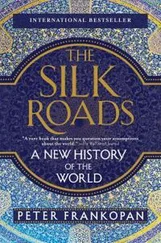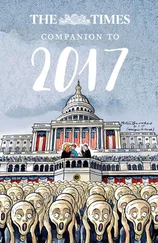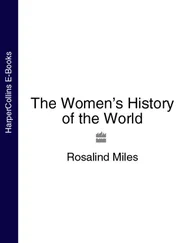1 ...7 8 9 11 12 13 ...28 THE NEANDERTHALS
Homo sapiens was by no means the only human species in the world of 50,000 years ago. In East and southeast Asia lived the descendants of those Homo erectus populations who had colonized the region over a million years earlier. Among other human populations the best known are the Neanderthals, distinguished from modern humans by their distinctive large and low-crowned heads with prominent brows and big teeth and powerful stocky bodies well adapted to cold. By contrast, the incoming modern people had an African body pattern—slender with long legs and small torsos—that copes better with heat stress. The Neanderthals had brains as large as modern humans and were in many ways highly successful. They adapted well to a wide range of habitats and climates ranging from the relatively arid Middle East to the cold of central Europe; their use of tools was sophisticated; and they were effective hunters of animals in prime condition such as bison, horse and reindeer. The burial of their dead, often with some elaboration, also indicates signs of a recognizably modern humanity. They almost certainly had language, too. But what the Neanderthals seem not to have possessed is the degree of social flexibility and cultural tradition that more than any other characteristic singles out Homo sapiens and explains our ultimate success in becoming the only global hominine.
This social and intellectual sophistication reveals itself in a number of ways but the result of it was almost always the same: the evolution of more complex social relations which allowed early humans to thrive in a much wider range of habitats and societies than previous hominine species had managed before. Whether living in large or small groups, Homo sapiens was able to overcome its environment to an unprecedented degree. The most striking evidence is provided by the wide variety of artefacts that have been discovered: engraved stones, ornaments, figurines, exotic shells, amber and ivory and, most famously, cave paintings. That the latter were frequently inaccessible and could have been seen only with ladders and artificial light suggests that a variety of factors motivated their creators. Whatever the explanation, these early works of art are an evocative monument to the humanity of these early hunters.
It is significant that the Neanderthals had almost no cultural traditions of this kind. A few incised bones have been found; similarly, the very occasional exotic piece of raw material occurs. By almost 28,000 years ago, both Neanderthals and Homo erectus were extinct. Modern humans had already colonized Australia 20,000 years before, and were set to colonize the Americas before 12,000 years ago. Henceforth modern humans were the sole surviving hominine in the world.
20,000 TO 10,000 BC
THE ICE AGE WORLD
By 10,000 years ago, humans had colonized almost the whole of the habitable world. It was an achievement made in the face of the last of a series of Ice Ages, when vast sheets of ice periodically advanced and retreated. The human species today is the product of this long process of adaptation to the varied conditions of the Ice Ages.
There have been eight Ice Ages in the last 800,000 years, each interspersed with warmer periods from 30,000 to 10,000 years known as interglacials, brief and extreme parts of this cycle. The Ice Ages were periods of exceptional cold away from the equator. Ice sheets advanced across the frozen wastes of the northern hemisphere as temperatures fell by up to 15 degrees centigrade. With so much of the earth’s water locked into the ice sheets, sea levels fell by up to 150m (500ft). As they did so, land bridges appeared, linking many major land areas and present-day islands into larger continental land masses.
Equatorial regions were also affected: as rainfall diminished, half the land area between the tropics became desert. With each advance of the ice, the plants and animals of the northern hemisphere withdrew to warmer latitudes. As the ice retreated, so they moved northwards again. Humans, too, must have migrated with these changing climates. Yet despite the extremes of cold, the human species continued to develop, spreading from its original African homeland to east and southeast Asia and to Europe. Mastery of fire and the invention of clothing were crucial to this achievement, as were new social and communication skills.
ICE AGE HUMANS
The height of the last Ice Age or LGM (last glacial maximum) was reached about 20,000 years ago. As the ice expanded, human populations contracted into a small number of more favourable habitats. Across almost the whole of the Eurasian landmass between the ice to the north and the deserts to the south, from the glacial cul-de-sac of Alaska to southern France, productive grasslands and steppes were created. Rich in seasonal grasses, they sustained large herds of mammoth, bison, horse and reindeer, all of them important food sources for Palaeolithic (the period of the emergence of modern man, about 2.5–3 million years ago to 12,000 BC) hunters.
Much the same sort of habitat seems to have developed in North America. By the time modern humans migrated there about 15,000 years ago, the rolling grasslands were teeming with animal life: giant bison with a six-foot horn spread; towering beaver-like creatures called casteroides; camels; ground sloths; stag moose; two types of musk-oxen; several varieties of large, often lion-sized cats; mastodons; and three types of mammoth. So effectively did the new human population hunt them that by about 10,000 years ago almost all of them were extinct, including the horse, re-introduced to the New World only by Europeans following in the wake of Columbus.
South of the Eurasian mammoth steppe lay an extensive zone of drier conditions. Indeed parts of the Sahara, the Near East and India became almost entirely arid, forcing their populations along permanent watercourses such as the Nile. Similar patterns of settlement are found in Australia, where cemeteries discovered along the Murray River bear marked resemblances to those along the Nile.
Modern humans were late arrivals in western Europe, replacing Neanderthal populations only from about 35,000 years ago. Yet the new communities developed remarkable levels of cultural expression. In southwest France, the Pyrenees and northern Spain, hundreds of caves decorated with paintings of symbols and animals have been discovered, evidence of a rich cultural tradition.
By 12,000 years ago, the last Ice Age was drawing to a close. As temperatures rose, vegetation spread and animals re-colonized the cold northern wastes. With them went hunters and gatherers. By 10,000 BC in Central America and the Near East, people had begun to move beyond their existing resources and to investigate new ways of producing food and manipulating plants and animals in the first experiments in farming.
8000 TO 4000 BC
FROM HUNTING TO FARMING: THE ORIGINS OF AGRICULTURE
The transition from hunting and gathering to agriculture irreversibly changed human society, but it involved the domestication (selective cropping and planting, or herding and rearing) of relatively few plants and animals and occurred independently in a very few areas. The earliest evidence of agriculture comes from the Levant 10,000 years ago, from where it spread to Europe, northern Africa and central Asia.
Ten thousand years ago, at the end of the last Ice Age, the human population numbered only a few millions and all their food came from wild plants and animals. Then people began to domesticate some species, so that today almost the entire world population depends for food on a relatively small range of crops and domestic animals. During the 150,000 years that preceded the “agricultural revolution”, anatomically modern humans had colonized most of the the globe and had learned to survive as foragers, subsisting on a great diversity of plant and animal foods. Foragers moved seasonally in small groups to obtain their food supplies and population densities remained low for many millennia.
Читать дальше










